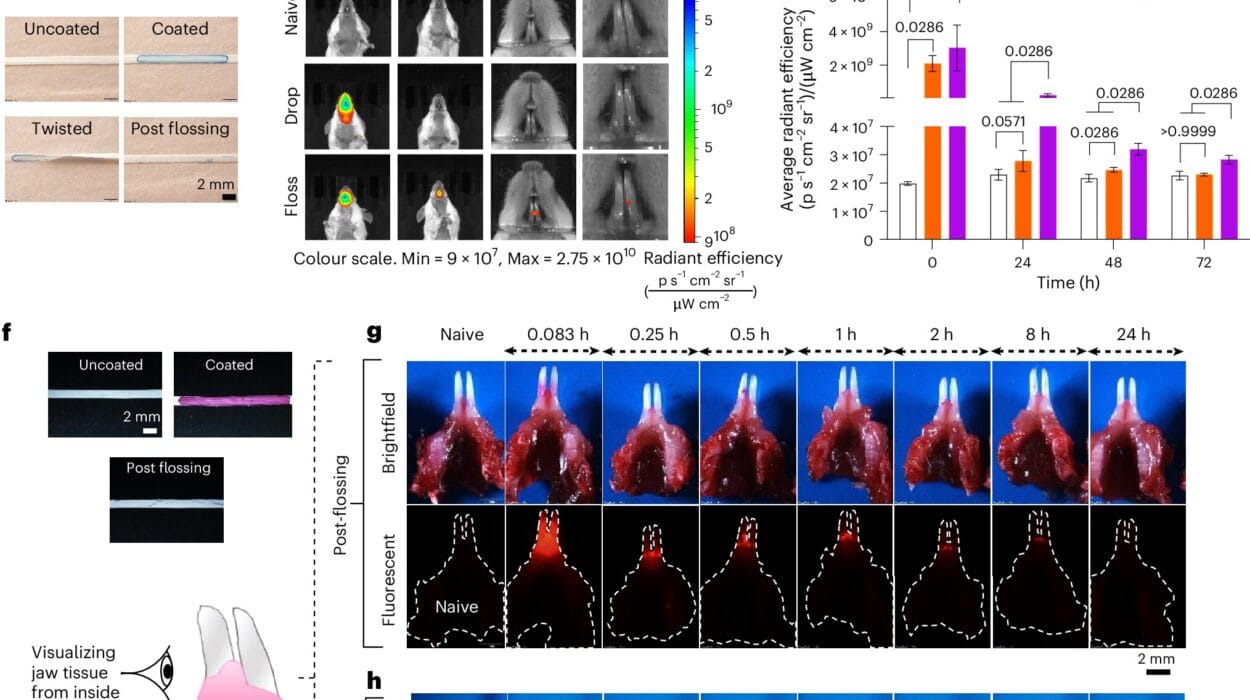In a quiet lab at Weill Cornell Medicine, a team of researchers has taken a bold step toward answering one of neuroscience’s most elusive questions: How does the wiring of our brains shape the way we think, act, and recover from injury?
Using a cutting-edge algorithm with the rather mythical name of Krakencoder, scientists have found a powerful new way to align the brain’s physical structure—its neural roads and highways—with the patterns of electrical activity that define how we experience the world. The study, published June 5 in Nature Methods, doesn’t just promise better understanding of brain function. It points toward a future where we can predict recovery from stroke, tailor treatments to individuals, and perhaps even enhance cognitive performance with precision tools.
The Invisible Symphony of the Brain
At the heart of the human experience is an intricate web of neurons—about 86 billion of them—connected through trillions of synapses. This dense, three-dimensional maze is called the structural connectome, and it represents the fixed “hardware” of the brain. But structure is only part of the story. There’s also the functional connectome—the dynamic “software” that shows how brain regions light up together during thoughts, actions, and sensations.
You might expect that regions wired together would always fire together, but that’s not always true. Our brains don’t behave like neatly programmed circuits. They’re more like improvisational jazz bands, where the players might not be sitting next to each other—but still manage to hit all the right notes, sometimes in perfect harmony, other times in unpredictable dissonance.
Understanding how the brain’s physical structure relates to its functional activity is one of the holy grails of neuroscience. It’s key to decoding cognition, diagnosing neurological diseases, predicting outcomes, and designing interventions that actually work. But mapping the relationship between structure and function has proven to be a frustrating and complex puzzle.
Piecing Together the Elephant
Imagine you’re in a pitch-black room trying to figure out what an elephant looks like. One person grabs the trunk and says it’s like a snake. Another feels the leg and declares it’s a tree. A third touches the ear and insists it’s a giant leaf. That’s how Dr. Amy Kuceyeski, professor of mathematics in radiology and neuroscience at Weill Cornell Medicine, describes the state of brain connectome research today.
“Everyone is using different methods to take pictures of the brain’s networks,” Kuceyeski says. Whether it’s different MRI machines, image processing software, or mathematical models, each approach gives only a partial view. This patchwork results in a scatter of insights—useful but incomplete.
Recognizing this fragmented landscape, Dr. Kuceyeski and her team set out to build something ambitious: a unified tool that could synthesize multiple brain representations into a single, more complete map. Enter the Krakencoder, a deep-learning algorithm with a monster appetite for complexity.
The Birth of the Krakencoder
“We needed something that could reach out like a multi-armed beast, grab different versions of the brain’s structure and activity, and merge them into one cohesive model,” recalls Keith Jamison, first author of the study and a research associate in Kuceyeski’s lab. This visual metaphor of a monstrous data-hungry creature inspired the tool’s name—Krakencoder, a playful homage to the mythical Kraken and the concept of autoencoding in machine learning.
The Krakencoder is an autoencoder, a type of neural network designed to compress vast amounts of input data into a simplified, essential representation, and then reconstruct it with minimal loss. In this case, the Krakencoder ingests dozens of “flavors” of connectome data—each generated from different MRI processing pipelines—and distills them into a singular, powerful understanding of how the brain’s structure supports its function.
The system was trained on over 700 individuals from the National Institutes of Health’s Human Connectome Project, a gold mine of high-resolution MRI scans and cognitive performance tests. With this diverse dataset, the Krakencoder learned how to predict an individual’s functional connectome from just their structural MRI—a feat researchers have struggled with for years.
A Twentyfold Leap in Prediction Power
The results? Nothing short of remarkable.
When compared to previously published models, the Krakencoder predicted functional brain activity from anatomical scans 20 times more accurately. This leap in performance is not just a technical victory—it opens doors to new possibilities in both clinical practice and cognitive neuroscience.
The Krakencoder didn’t stop there. Its compressed brain representations could also predict a person’s age, sex, and cognitive performance scores—all from imaging data alone. These scores, drawn from psychological tests administered to participants, are notoriously difficult to estimate from brain scans. But Krakencoder did it with stunning precision.
“This is an incredible breakthrough,” Dr. Kuceyeski explains. “We’re now able to associate patterns of wiring and activity in the brain with how well someone thinks, moves, and processes information. That’s the kind of insight we need to diagnose, predict, and treat brain disorders more effectively.”
Turning Damage into Data
With the Krakencoder already demonstrating its potential in healthy brains, the next step is to test it in brains that are anything but.
Neuroscientists have long known that after injury—whether from a stroke, trauma, or neurodegenerative disease—the brain tries to reroute signals, activating alternate pathways to regain lost function. But identifying which connections are compensating, and how well they’re working, has been incredibly difficult using standard tools.
This is where the Krakencoder’s cousin comes in—a tool called NeMo, short for Network Modification. NeMo models how structural damage alters communication between brain regions. By combining NeMo and the Krakencoder, the team can simulate functional connectomes in people with brain damage, using only the structural MRIs typically collected in clinics.
Ph.D. student Christie Gillies is leading the charge. She uses the NeMo + Krakencoder pipeline to study stroke patients, comparing the simulated functional connectomes to actual functional MRI scans. The hybrid model doesn’t just recreate the patterns of brain activity—it predicts the patients’ motor and language recovery with greater accuracy than existing methods.
“We’re finding that our simulated functional connectomes are better at forecasting how well someone will walk or talk after a stroke,” Kuceyeski says. “That’s huge for personalized medicine.”
Toward Personalized Brain Repair
The implications of this work stretch far beyond academic interest. In the future, tools like Krakencoder could help identify which neural circuits are still viable in a damaged brain—and which might be reawakened.
Imagine knowing which connections in a stroke patient’s brain are still “alive but asleep,” and targeting them with transcranial magnetic stimulation (TMS)—a non-invasive technique that uses magnetic pulses to stimulate specific brain regions. Or designing individualized rehabilitation programs that focus on the areas most likely to recover function.
The Krakencoder could also help identify biomarkers for mental illness, cognitive decline, or learning disabilities—before symptoms even appear. By comparing a person’s connectome to typical patterns, researchers could flag subtle changes that indicate early signs of Alzheimer’s, autism, or schizophrenia.
And in a more speculative future, perhaps even cognitive enhancement could be possible. If we can map the circuits that support attention, creativity, or memory, might we someday be able to optimize them? Krakencoder doesn’t answer that question—but it makes asking it far more plausible.
A New Era of Brain Mapping
What makes the Krakencoder so revolutionary isn’t just its accuracy, but its versatility. By embracing the messiness of data—the multiple ways to measure, process, and interpret brain scans—it doesn’t choose one path. It walks them all at once, blending the strengths of each to form a more complete picture.
As neuroscience ventures deeper into the 21st century, the need for such unified tools becomes more urgent. Our brains don’t come with instruction manuals. But algorithms like the Krakencoder bring us a little closer to writing one.
By transforming disconnected fragments into cohesive insights, this work represents not just a technological triumph, but a profound shift in how we understand the brain’s inner language. With the Krakencoder as our translator, we may finally begin to decode the mind’s most intimate secrets—and use that knowledge to heal, restore, and perhaps even enhance what it means to be human.
Reference: Keith W. Jamison et al, Krakencoder: a unified brain connectome translation and fusion tool, Nature Methods (2025). DOI: 10.1038/s41592-025-02706-2






